Bealtaine
This is the Feast of Bealtaine. The light of the sun in the Wheel of the Year stands in the south east. This is the time of spring flowering, this is the time of the 'shining fire' light. Our celebrations are in the light of day. It is often said that we are entering the white part of the year.
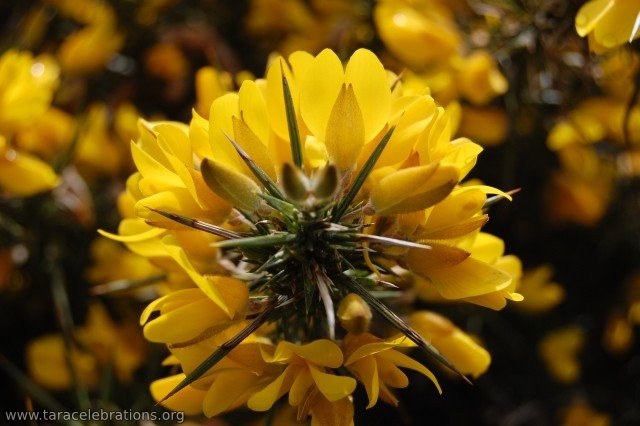 | 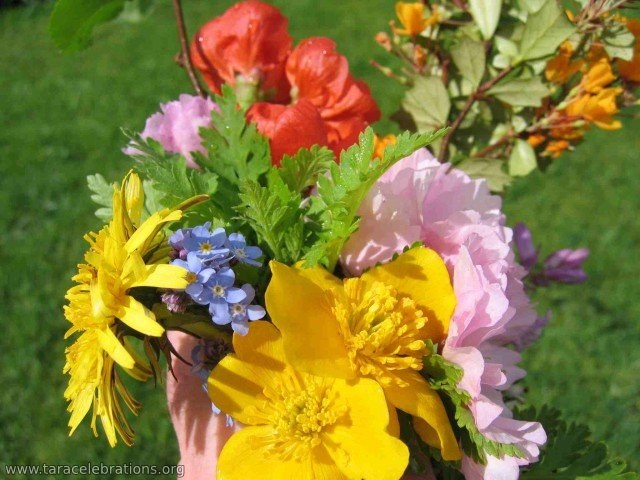 |
Bealtaine is the time of year when nature suddenly seems to burst forth from the winter grip. Flowers, leaves and buds erupt and proclaim the vibrancy of life. The underlying energies sponsor expansion, growth, fun, play, joy, bounty and invigoration.
The name itself refers to the ritual bright summer fires. This is the Druidic fire light on the Hill when all other fires are extinguished.
The Patriarchal energy of Patrick and the Matriarchal energy of Brigid have combined to produce the blessed 'leanbh na grian' who is full of life and brightness and promise.
Old records suggest that the ancient Irish calendar divided the year into two, the dark and light, 1st May being the first day of summer (light), 1st November the first of winter (dark). Thus at Bealtaine we say our final farewell to the lingering cold nights, and watch the plants flower, promising good crops as all life flourishes in the warmth of longer light filled days.
But we can not stand idle, waiting for the harvest at Lughnasadh. There is much we can do to activate and aid the successful growth of those seeds we planted earlier in the year. Good gardening and farming practice of watering, feeding and protecting will bring forth an abundant harvest, enough to fill the stores for the coming challenges of next winter. |
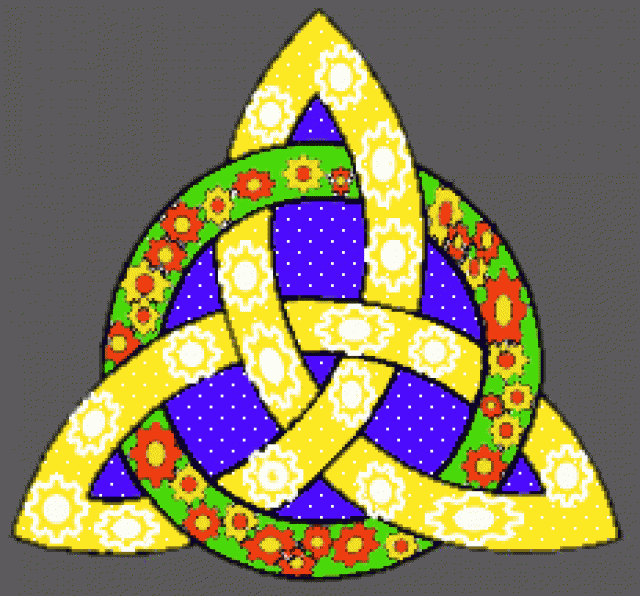 |
May Bush
On the evening before May day a bush is cut and it is decorated with flowers, rags and sometimes egg shells.
The flowers are generally white and blue in colour and are mostly wild. The May Bush is in honour of the Blessed Virgin. Some take it down after May day and some leave it up for the month. Duchas Schools Project
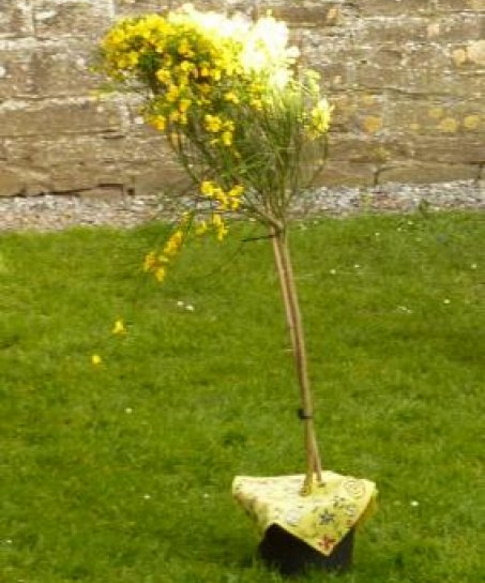 | 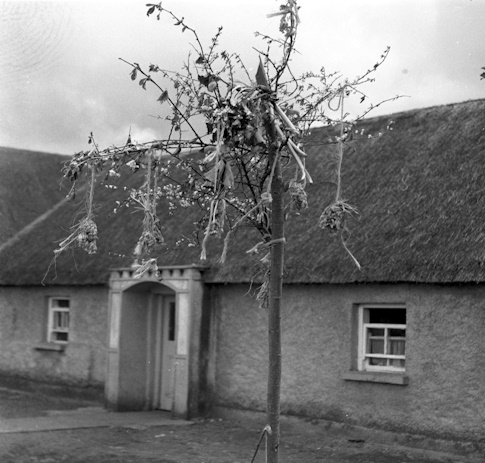 |
This gorse served as our May Bush at Bective in 2012. Go to Pishogues for May Eve & May Day to read more about yellow flowers at Bealtaine.
- You can introduce yourself to the bush / tree by giving it some water.
- Tie a ribbon (degradeable) on a branch of the tree, asking that the summer be fine and growth and crops abundant, or that something in your life may blossom and bear fruit.
- Put some yellow flowers in it's branches.
These quotes from the Duchas School's Project give ideas of how we can celebrate with a May Bush.
On the eve of May day a May bush is made. It is erected in honour of the Blessed Virgin.
A white thorn bush is got and (with) wild flowers are tied to it in small bunches with coloured ribbons. Sometimes a picture of the Blessed Virgin is hung on it. This is a very old custom.
On May day morning the person who is up first places it in front of the door or over it. Long ago people believed that no thunder nor lightning nor evil spirits would interfere with the house that had a May bush placed before it.
Long ago the May bush was set on fire and the people would dance round it and pass the young children through the smoke to protect them from the power of witchcraft.
Another custom of "May day" is the making of the May "tree". This was done by cutting the branch of a lone bush and by putting a primrose on every thorn of the branch.
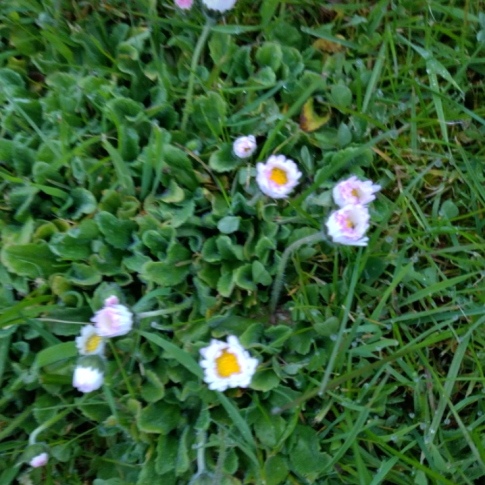 | 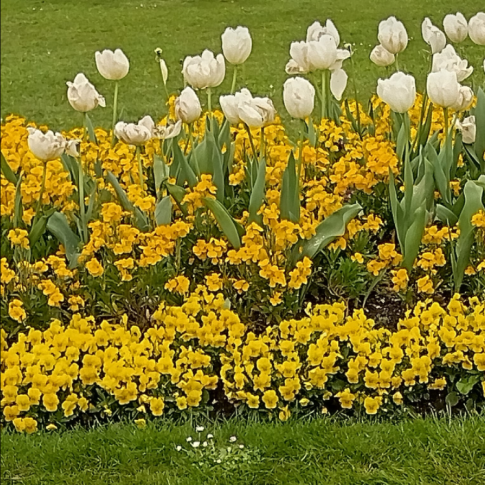 |  |
It is not unlikely that the custom originated, in some parts of England, of the youth of both sexes going into the woods and fields on the first of May, to gather boughs and flowers, with which they make garlands, and adorn their doors and windows with nosegays and artificial crowns.
Triumphing thus in the flowery spoil, they decked also with flowers a tall pole, which they named the Maypole, and which they placed in some convenient part of the village, and spent their time in dancing round it, consecrating it, as it were, to the Goddess of Flowers, without the least violation being offered to it through the circle of the whole year.
Nor is this custom alone observed in England, but it is done in other nations, particularly Italy, where young men and maidens are accustomed to go into the fields on the calends of May, and bring thence the branches of trees, singing all the way as they return, and so place them on the doors of their houses.
May Pole
The young unwed men would go into the forest and return with a tree to shape into a pole. The first recorded evidence of maypole dancing in Britain dates back to 1350 when it appears that a tall birch pole was erected at Llanidloes in central Wales. Traditionally the pole was placed in the centre of the settlement and guarded through the night. Then the people would mark the day with ceremonies of celebration and respect, and dance around the maypole clockwise, to bring fertility and good luck. The pole would be decorated with leaves, flowers and ribbons.
Later, brightly coloured ribbons were woven around the pole by the dancers, as they wove around each other. This serves as an image of the balance of the masculine and feminine energies and the duality of life. The ribbons would then be removed, to be burnt in the Bealtaine fire next year. This symbolises the old dying each year and giving birth to the new.
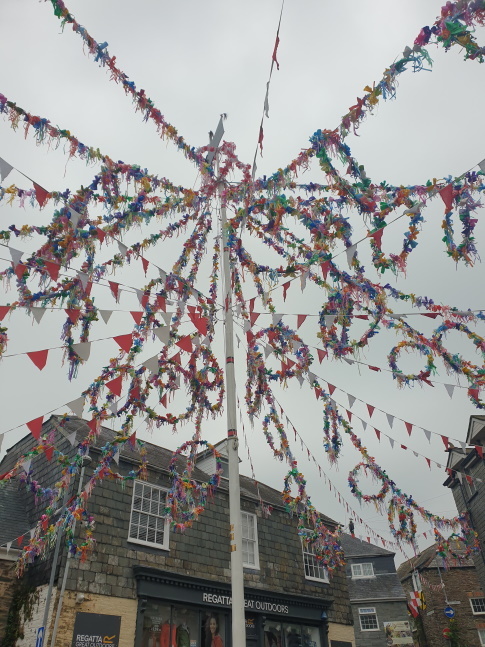 | Padstow Maypole, Cornwall
Unite and unite, and let us all unite, For summer is a-come unto day... |
On the first of May, a species of festivity, Hitchins tells us, was observed in his time at Padstow : called the Hobby-horse, from thefigure of a horse being carried through the streets. Men, women, and children flocked round it, when they proceeded to a place called Traitor Pool, about a quarter of a mile distant, in which the hobby-horse was always supposed to drink. The head, after being dipped into the water, was instantly taken out, and the mud and water were sprinkled on the spectators, to the no small diversion of all. On returning home a particular song was sung, which was supposed to commemorate the event that gave the hobby-horse birth. The Legendary Lore of the Holy Wells of England
The Old Oss emerges from the Golden Lion pub, returning to the streets of Padstow.
A Bealtaine Prayer from Pat
Mother Earth and Father Sky, infuse me with the energies of nature, ignite the fires of my heart and soul so that I may purge them of the burdens of the past. Burn away the diseases of procrastination and anxiety to make room for creative action and calm. Banish self-doubt and despair to be replaced by confidence and hope.
Give me the wisdom of the dandelions who sleep in my garden at night, blossom during the day, grow, flower, die and are reborn by spreading their wind-borne seeds far and wide to start the cycle again. Oh great healing dandelions, share with me the secrets of the earth.
Mother Earth and Father Sky, stoke the furnace of my soul that I may remember what a special being I am. Let me cultivate and nurture the ideas which I planted in spring, may they flourish through the summer and may I reap the bountiful harvest of my endeavours in the autumn.
Cleanse me of the sludge of apathy and let creative juices flow throughout my life. Help me grow, blossom and become the wonderful being I was born to be - a living, giving, soaring, singing, loving being that is as close to Nature and her allies as a new-born lamb is to its mother. Let me not only reach but surpass my potential and may I be a shining example to all who wish to do the same.
Mother Earth and Father Sky, as you call on all the resources of the universe to enable nature to do its magic time after time and enable the cycle of life to continue and flourish, may I call upon you to do the same for me. May all the resources that I need in future and the present be available to me to work my own little bit of magic.
With eternal Gratitude, Love and Wonderment,
Your Conduit,
Pat. Bealtaine 2022
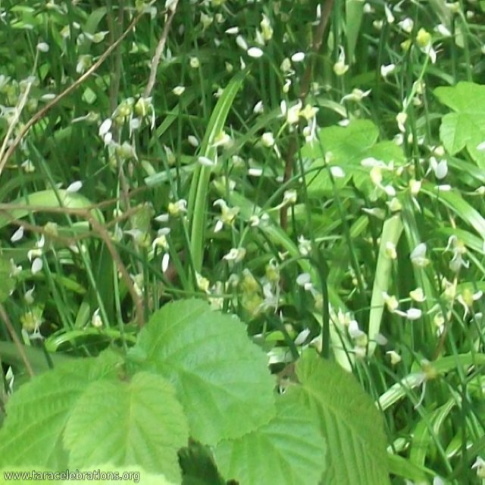 | 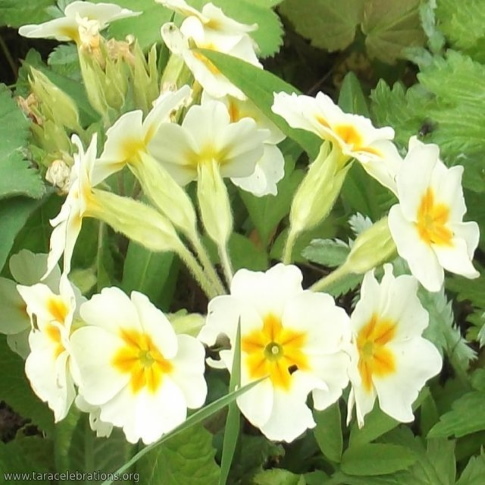 |
The chorus of "Circle of Sun" written by Xenia in 2018
For around it turns the wheel of the year,
Spring flowers fall, when the summer is near,
Circle of life, beauty-rebirth comes clear,
Join the light, when the blossoms appear.
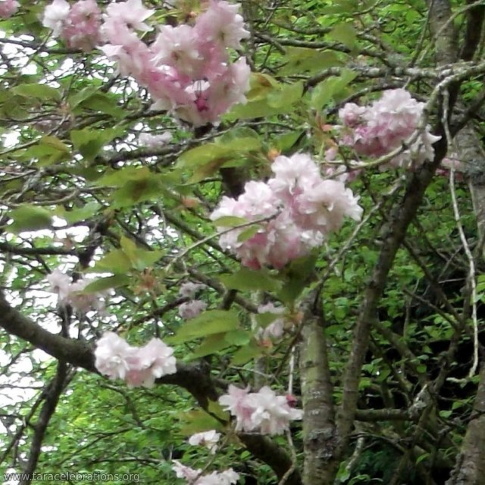 | 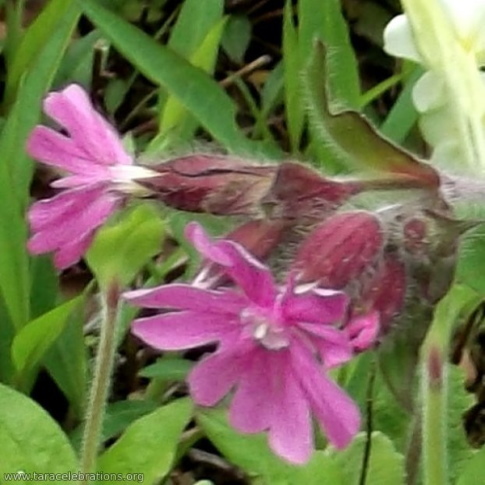 |
Rogation Sunday
Rogation is an ancient Christian church festival to seek blessing for a community and its sustenance.
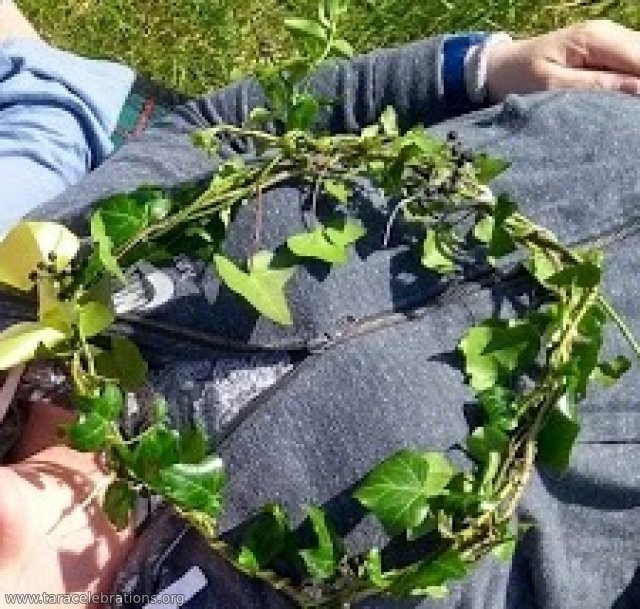
|
We will "beat the bounds", a Celtic custom of walking the area around our land boundary to mend fences and relationships. We will imagine our own boundaries as we walk the land to clear and strengthen them. Using a small piece of a Yew tree dipped in the fresh waters of lough Derravaragh we will bless the land. Yew is associated with our ancestors and so will we call on them to aid our intentions. |
Quote from a verse written in 2012... Abundance of Bealtaine
The full poem is here - Written for 11th May 2012 - The Summer Phase - Bective
| With this turning, life revives, Difficult times pass away, Learn from the tree that yet survives Arduous winter's bleak decay. | Forget the loneliness, watch leaves unfurled, Enlightened hours of colour excite. Fullness and plenty, love your world, Abundance blesses our souls tonight. |
Beltany Stone Circle, Nr. Raphoe
The smell of the furze on the walk up to it was beautiful. Such a heavy sweet smell.
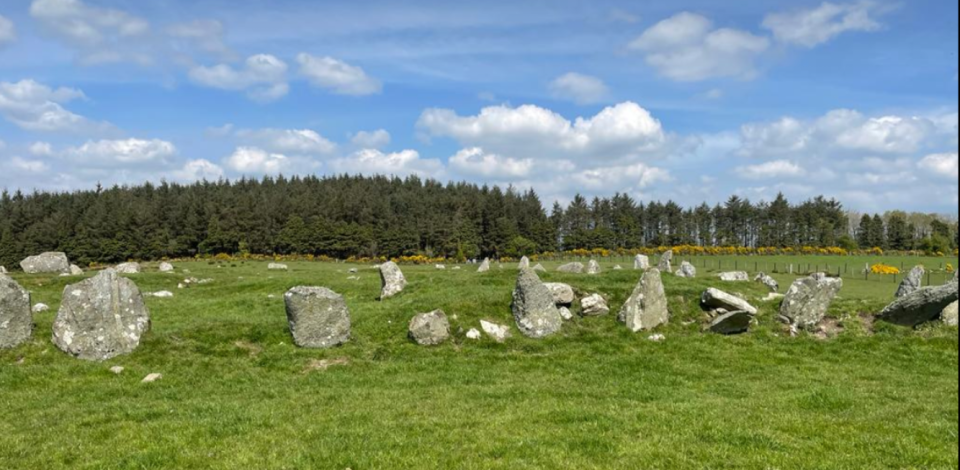
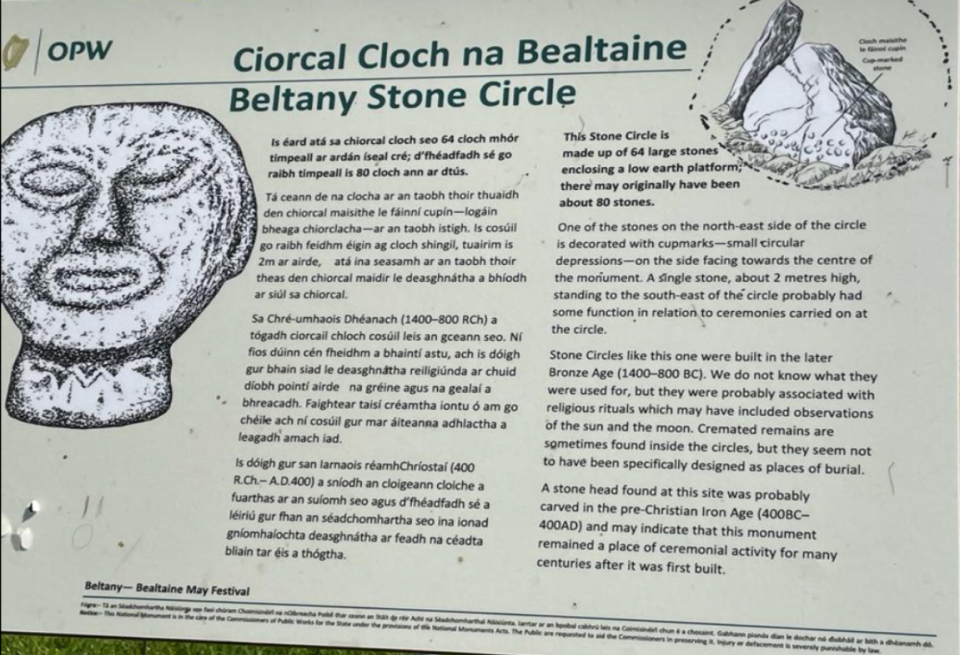
Bealtaine Celebration Reports
Pishogues for May Eve & May Day
There are so many superstitions for this day: cows, milk, fairies, flowers... all are fated...
Visit a well
May is a month for visiting wells. Sounds of howling wind through the hedge and trees, showers, grey clouds, and yet within the turbulence we were in a still place of calm and peace.





